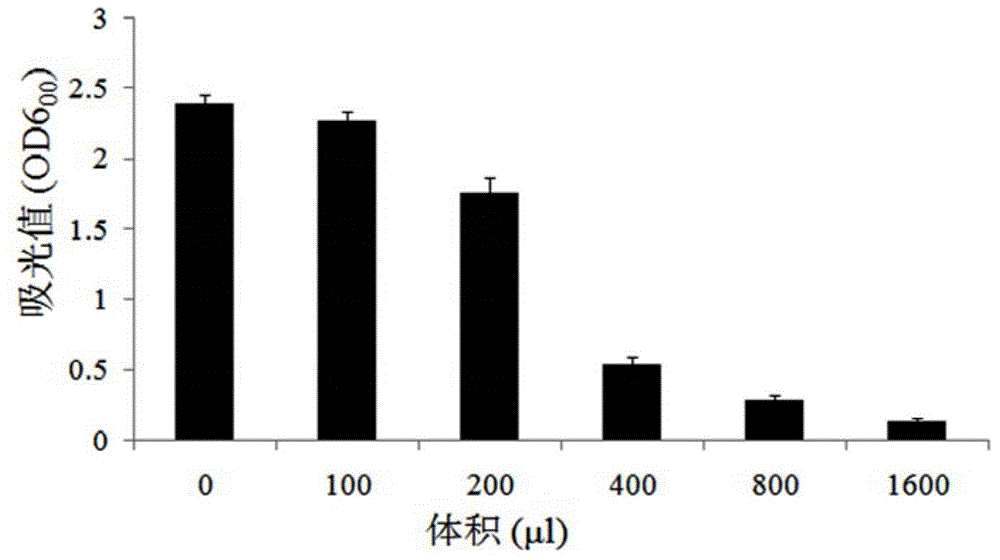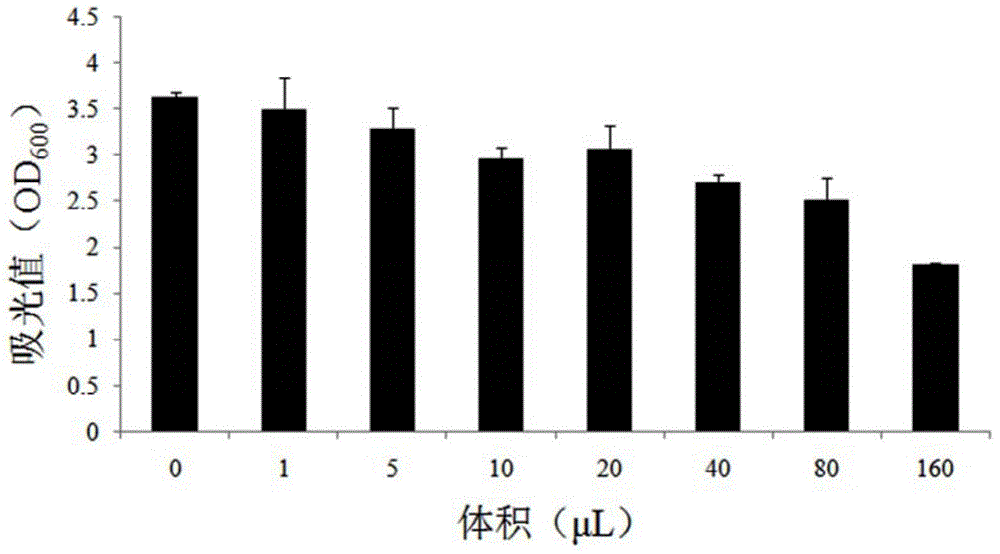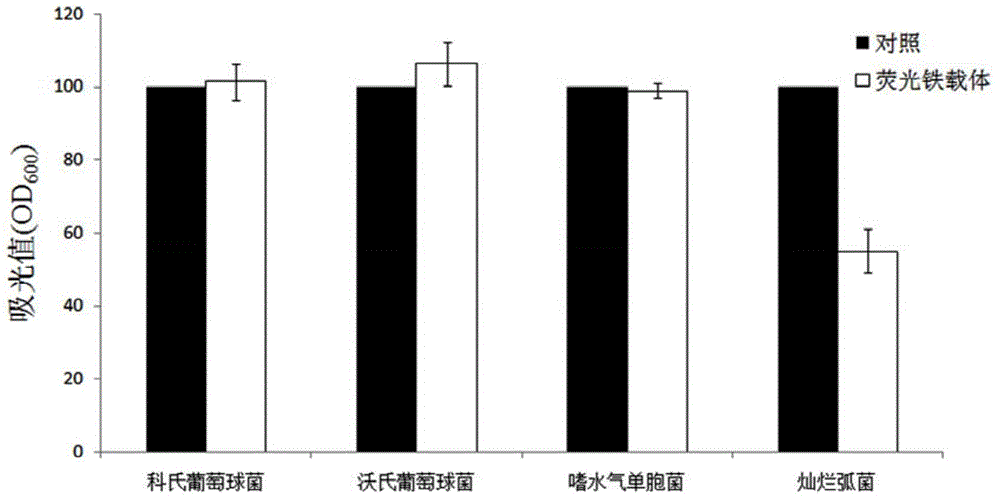Novel application of pseudomonas aeruginosa fluorescene ironophore
A technology of Pseudomonas aeruginosa and fluorescent siderophore, which is applied in the field of environmental microorganisms and can solve problems such as not being disclosed
- Summary
- Abstract
- Description
- Claims
- Application Information
AI Technical Summary
Problems solved by technology
Method used
Image
Examples
Embodiment 1
[0022] Inhibition of the supernatant of Pseudomonas aeruginosa on the growth of Vibrio splendidus
[0023] Pseudomonas aeruginosa can secrete fluorescent siderophores in large quantities in inorganic salt medium with succinic acid as carbon source. Among them, the formula of the inorganic salt medium with succinic acid as the carbon source is: dipotassium hydrogen phosphate 6.0 g / L, potassium dihydrogen phosphate 3.0 g / L, ammonium sulfate 1.0 g / L, magnesium sulfate heptahydrate 0.1 g / L , succinic acid 4.0 g / L. Activate the Pseudomonas aeruginosa seeds stored at -80 ℃, insert the overnight cultured seed solution into the inorganic salt medium with succinic acid as the carbon source according to the inoculum amount of 10%, and cultivate it, and the liquid volume of the shake bottle is 30%. The temperature is 28-30 ℃, the cultivation speed is 100-120 rpm / min, and the culture is 48 hours. The bacterial culture was centrifuged at 10,000 rpm and the supernatant collected. The sup...
Embodiment 2
[0027] Purification of fluorescent siderophores
[0028]① Preparation of copper NTA agarose: Nickel NTA agarose was purchased from Shanghai Biotechnology Engineering Co., Ltd., and buffer A was used to wash off the chelated nickel ions on the agar. The composition of buffer A was 0.02 M sodium phosphate, 0.5 M NaCl, 0.05 M EDTA, pH 7.2. Wash the remaining buffer A with 5 volumes of distilled water. Add 0.5 ml of copper sulfate with a concentration of 0.1 M to chelate copper ions, wash off excess copper ions with 5 times the volume of distilled water, and the resulting copper NTA agarose;
[0029] ②Cultivation of Pseudomonas aeruginosa PA1: Activate the Pseudomonas aeruginosa seeds stored at -80 ℃, and insert the overnight cultured seed liquid into the inorganic salt medium with succinic acid as the carbon source according to the inoculation amount of 10% , the filling volume of the shake bottle is 30%, the culture temperature is 28-30 ℃, the culture speed is 100-120 rpm / min,...
Embodiment 3
[0032] Inhibitory effect of fluorescent siderophore on the growth of Vibrio splendidus in 2216E medium
[0033] The pH of the purified fluorescent siderophores in Example 2 above was adjusted to 7.0-7.2 with NaOH, sterilized by filtration with a 0.45 μm filter membrane, and stored for future use.
[0034] Vibrio splendidus preserved at -80 ℃ was inoculated into 2216E medium, and cultivated overnight in an air bath constant temperature shaker at 28-30 ℃ at 100-120 rpm / min. The cultured bacterial solution was inoculated into the sterilized 2216E medium according to the inoculation amount of 10%, so that the bacterial concentration reached 1.0 × 10 7 CFU / mL. Take 8 test tubes, add 5 mL of 2216E culture solution containing Vibrio splendidus to each tube, and add 0, 1, 5, 10, 20, 40, 80 and 160 μL of purified fluorescent siderophores, respectively. After culturing at 30°C for 24 hours, the absorbance of the cultured bacterial solution was measured at 600 nm by a UV spectrophoto...
PUM
 Login to View More
Login to View More Abstract
Description
Claims
Application Information
 Login to View More
Login to View More - R&D
- Intellectual Property
- Life Sciences
- Materials
- Tech Scout
- Unparalleled Data Quality
- Higher Quality Content
- 60% Fewer Hallucinations
Browse by: Latest US Patents, China's latest patents, Technical Efficacy Thesaurus, Application Domain, Technology Topic, Popular Technical Reports.
© 2025 PatSnap. All rights reserved.Legal|Privacy policy|Modern Slavery Act Transparency Statement|Sitemap|About US| Contact US: help@patsnap.com



